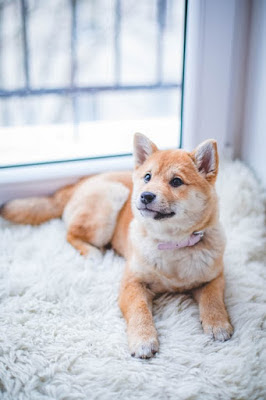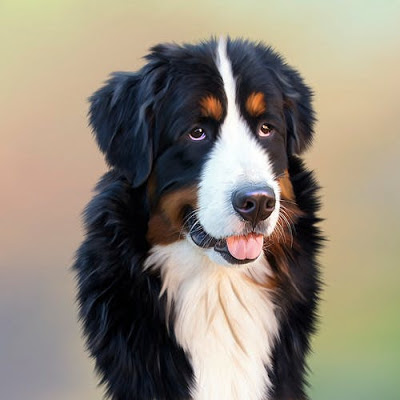6 Common Causes of Hair Loss (canine alopecia) in Dogs.
6 Common Causes of Hair Loss (canine alopecia) in Dogs
What is Canine Alopecia ?
Canine Alopecia refer to hair loss , it also includes coat defects, and failure of hair growth .
Hair loss in pets is typically associated with an underlying medical disorder. Some can be a result of genetics, while others Cushing’s disease, Addison’s disease, Hypothyroidism, Hyperthyroidism, etc. are caused due to external parasites, fungal and bacterial skin infections, certain drugs, hormonal/endocrine imbalances. Allergies, stress, poor nutrition, lack of grooming and cancer can also cause hair loss .
sunlight and temperature influenced the hormones that control hair growth. Thus, many pets have major growing and shedding cycles each spring and fall. With more pets kept indoors in a controlled climate, marked growing and shedding cycles are less frequent, and they tend to shed evenly through the year.
A good blood supply brings nutrients and a normal concentration of hormones so that the area experiences healthy hair growth. Areas with a poor blood supply do not have healthy hair growth.
6 Common Causes of Hair Loss (canine alopecia) in Dogs.
1. Parasites
External parasites are notorious for causing alopecia in dogs. Fleas, ticks, lice and mites can all cause intense itching and scratching, which leads to hair loss. Mange (a skin disease) may also cause localised to generalised hair loss.2. Fungal infections
Fungal infections of the skin (called ‘Dermatophytosis’) can cause partial to complete alopecia with scaling and redness. Some fungal infections are zoonotic, which means that they have the potential to cause skin lesions in people as well.3. Blood flow
Hair is a living element anchored in the follicle and is nourished by blood for most of its cycle. If blood circulation is poor, hair will not grow well. Pets with weak hearts, low blood pressure, and chronic anaemia may have a dull coat and skin.4. Bacterial infections
Bacterial skin infections can cause alopecia with redness, skin crusting, and circular patterns of hair loss. Bacterial folliculitis is the most common cause of multifocal alopecia.5. Poor nutrition
Hair requires a constant supply of nutrients to remain anchored in the skin. Nutrients that support healthy hair are: vitamins, minerals, antioxidants, and Omega 3 and Omega 6 fatty acids.6. Allergies
Allergic pets have itchy skin, and in response they scratch or chew out their hair. Pets can be allergic to:Foods – Grains (wheat, corn, soy), meat, fish, pork, milk, yeast.
Inhaled allergens – Pollen, cigarette smoke, perfumes
Contact allergies – Walking through grass, chemically treated floors or carpets
Example of Breeds Most Susceptible to Hair Loss.
Hair loss due to hypothyroid disease affects Afghan Hound, Airedale, Boxer, Chow Chow, Cocker Spaniel, Dachshund, Doberman Pinscher, English Bulldog, Golden Retriever, Great Dane, Irish Setter, Irish Wolfhound, Miniature and Giant Schnauzer, Newfoundland, Poodle, Scottish Deerhound and Shetland SheepdogsHair loss due to hyper-adrenocorticism (Cushing’s Disease) affects Beagle, Boston Terrier, Boxer, Dachshund, and Poodle
Some breeds grow hair very slowly after being clipped – Siberian Huskies, Alaskan Malamutes, Chow Chows and mixed breed dogs with Northern genetics
Doberman Pinschers are prone to developing colour dilution alopecia
Dachshunds have a breed predilection for thinning over the ears, abdomen, and neck.
Treatment for dog alopecia ( Hair Loss )
The treatment your dog will depend on the reason behind their hair loss, which could potentially be down to a number of dog skin conditions. Make sure you talk to your vet to get the right diagnosis.All Dogs should be given regular flea control treatments, but your vet might recommend other treatments if they think another cause is to blame, such as an anti-fungal treatment for ringworm. The causes of hair loss, such as allergic skin disease and other dog skin conditions, can be challenging to treat, but a veterinary dermatologist will be able to give you all the advice you need. Other causes, like hormonal conditions such as an underactive thyroid or adrenal gland problems, may require longer-term treatment.
Consult to your vet as soon as you suspect that your pet may be suffering with dog alopecia. The sooner you can get a diagnosis, the sooner your pet can be successfully treated and happy and healthy once more.















0 Comments